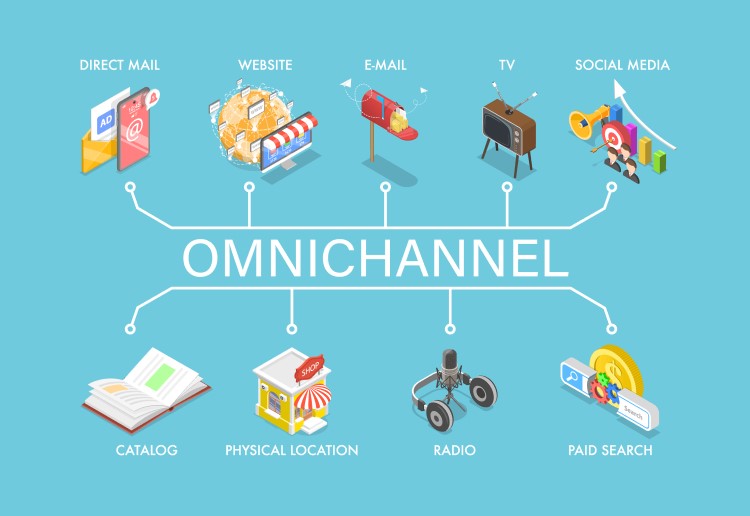
By integrating various channels, you can create a cohesive brand experience. This approach allows you to meet customer needs, build loyalty, and drive sales. Moreover, leveraging technology and data will help you personalize interactions and improve targeting. You can effectively engage customers at every touchpoint, from social media to physical stores.
As you implement these strategies, remember that consistency is key. Each channel should reinforce your brand message while catering to specific customer preferences. This comprehensive strategy will not only enhance customer satisfaction but also position your brand for long-term success. Embracing omni-channel marketing can transform how you connect with customers and ultimately boost your retail performance.
Understanding Omni-channel Marketing
Omni-channel marketing refers to a seamless approach that integrates multiple channels to enhance customer engagement. This strategy combines online and offline platforms, allowing customers to interact with your brand in various ways. For example, a customer might browse products on your website, visit a physical store, and make a purchase through a mobile app. Each of these interactions connects, creating a cohesive experience.
The significance of omni-channel marketing strategies lies in their ability to meet consumer expectations. Today’s customers expect a consistent experience, regardless of the channel they use. They want to receive the same level of service and product information, whether they are shopping online or in-store. By implementing these strategies, you improve customer satisfaction and foster loyalty.
Furthermore, omni-channel marketing enhances data collection. You can gather insights from various touchpoints, which helps you understand customer behavior better. This understanding allows you to tailor your marketing efforts to specific segments. As a result, you can provide personalized recommendations, improving conversion rates. In addition, a successful omni-channel approach can increase sales. According to research, businesses that adopt omni-channel strategies see higher revenue growth compared to those that do not. Therefore, embracing omni-channel marketing is essential for any retailer aiming to thrive in a competitive environment.
Customer Experience Across Channels
Providing a seamless customer experience across all platforms is essential for modern retailers. Customers interact with brands through various channels, including websites, social media, and physical stores. Therefore, each touchpoint should offer a consistent experience. When customers encounter a disjointed experience, they may become frustrated and disengaged. This frustration can lead to lost sales and reduced brand loyalty.
Omni-channel marketing strategies focus on creating this seamless experience. By integrating online and offline channels, you make it easier for customers to interact with your brand. For instance, a customer might see an ad on social media and decide to visit your store. If they find the same promotions and product information in-store, they feel valued and understood. This consistency builds trust and encourages repeat purchases.
Additionally, a unified customer experience fosters better communication. When you maintain the same messaging across all platforms, customers receive clear information. This clarity enhances their confidence in your brand. Furthermore, gathering data from all channels allows you to better understand customer preferences. You can then tailor your offerings based on their feedback. As a result, your marketing efforts become more effective, and you drive higher engagement. In a competitive market, prioritizing a seamless customer experience is not just beneficial; it is essential for long-term success.
Integrating Technology for Consistency
Integrating technology plays a significant role in creating a unified shopping experience. With the right tools, you can connect various channels seamlessly. For instance, using a Customer Relationship Management (CRM) system helps track customer interactions across platforms. This tracking allows you to tailor your marketing messages to specific customer needs. As a result, customers feel more valued and understood.
Moreover, integrating inventory management systems enhances consistency. When you maintain real-time inventory data, customers can see product availability both online and in-store. If a product is out of stock online, it should reflect in-store availability too. This transparency builds trust and encourages customers to engage with your brand more frequently. Additionally, using point-of-sale systems that link with your online store helps create a cohesive shopping experience.
Omni-channel marketing strategies benefit greatly from data analytics. By analyzing customer behavior across different channels, you can identify trends and preferences. This data helps you make informed decisions about promotions and product placements. Furthermore, it allows you to personalize the shopping experience. Customers appreciate when brands anticipate their needs, which fosters loyalty and encourages repeat business. Ultimately, leveraging technology creates a consistent and engaging shopping experience that meets customer expectations.
Data-Driven Decision Making
Data-driven decision making is essential for effective marketing in retail. By leveraging customer data, you can enhance your personalized marketing efforts. When you analyze customer interactions, preferences, and purchase history, you gain valuable insights. These insights allow you to tailor your messages to meet individual needs. As a result, customers feel more connected to your brand.
Additionally, using data helps improve your targeting strategies. You can segment your audience based on demographics, behaviors, and preferences. This segmentation allows you to create specific campaigns for different groups. For example, if you notice a segment that frequently buys eco-friendly products, you can focus your messaging on sustainability. This targeted approach increases engagement and conversion rates.
Omni-channel marketing strategies greatly benefit from data analysis. By collecting data across all touchpoints, you can create a comprehensive view of your customers. This view helps you understand their journey, whether they shop online or in-store. Consequently, you can deliver a consistent message across all platforms. Moreover, utilizing analytics tools helps you measure the effectiveness of your campaigns. You can track which strategies work best and make adjustments in real time. Ultimately, leveraging customer data not only enhances your marketing efforts but also builds long-lasting relationships with your customers.
Measuring Success in Omni-channel Strategies
Measuring success in omni-channel marketing strategies requires identifying key performance indicators (KPIs) and metrics. First, customer engagement is essential. Track how often customers interact with your brand across various channels. High engagement rates often indicate effective marketing efforts. Next, conversion rates are critical. Monitor how many interactions lead to purchases. You want to know which channels drive the most sales.
Additionally, customer retention is another important metric. Assess how many customers return for repeat purchases. A high retention rate suggests that your strategies resonate with your audience. Also, analyze customer lifetime value (CLV). This metric helps you understand the long-term value of each customer. By knowing CLV, you can adjust your marketing strategies accordingly.
Finally, consider measuring customer satisfaction. Use surveys and feedback tools to gauge how customers feel about their experiences. Positive feedback usually reflects successful omni-channel marketing efforts. When you combine these metrics, you create a comprehensive picture of your strategy’s effectiveness. By continuously monitoring and analyzing these KPIs, you can make informed decisions. This ongoing evaluation will allow you to adapt and refine your omni-channel marketing strategies to meet your customers’ needs effectively.
Case Studies of Successful Omni-channel Campaigns
Several retailers have successfully implemented omni-channel marketing strategies, providing valuable lessons for others. One notable example is Starbucks. They integrate their mobile app with in-store experiences. Customers can order ahead and pay through the app. This convenience keeps customers engaged and increases sales. Furthermore, Starbucks collects data through its app, allowing personalized marketing efforts. This approach has significantly enhanced customer loyalty.
Another example is Nordstrom. They focus on providing a seamless experience across channels. Customers can browse online and pick up items in-store. This strategy combines convenience with personalized service. Additionally, Nordstrom encourages employees to engage with customers across platforms. This personal touch strengthens customer relationships and drives repeat business.
Target also excels in omni-channel marketing. They offer services like same-day delivery and in-store pickup. This flexibility meets diverse customer needs and preferences. Moreover, Target’s mobile app allows customers to access exclusive deals and promotions. By leveraging technology, they enhance the shopping experience.
These case studies demonstrate the effectiveness of omni-channel marketing strategies. You can learn from their successes by focusing on convenience, personalization, and technology. Adopting similar approaches may improve your own marketing efforts and strengthen customer loyalty.
Conclusion
Adopting effective omni-channel marketing strategies can transform your retail business. You can create a seamless experience for your customers by integrating online and offline platforms. This approach not only enhances customer satisfaction but also drives sales. As seen in successful case studies, leveraging technology and data can personalize customer interactions and improve targeting.
Additionally, measuring success through key performance indicators helps you refine your strategies over time. Remember that customer engagement is essential. Fostering connections across multiple channels builds loyalty and encourages repeat purchases. As you implement these strategies, stay adaptable to market trends and customer preferences. Embracing change and innovation will keep your business competitive. By prioritizing customer experience, you can effectively elevate your retail success.


